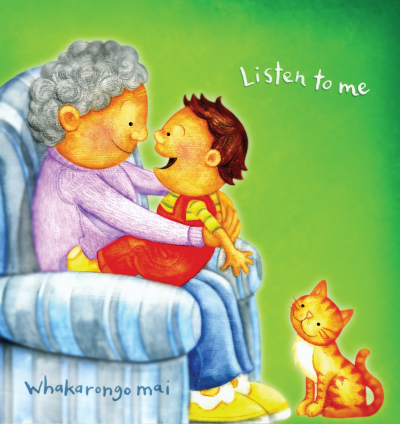
Beginners’ te reo Māori and play activities
There are many resources and activities that whānau can use to help their tamaiti learn te reo Māori.
Starting a te reo Māori journey
If whānau are keen for their tamaiti to learn te reo Māori, talk with them about their use of the language at home and their connections to te ao Māori.
If they lack confidence in speaking themselves, assure them that there are many ways they can bring te reo into their home and whānau.
The internet is full of resources to help them build their language ability and confidence. Remind them too that their tamaiti won't judge their efforts.
Although it might feel like a struggle for adults learning a second language, the early years are a great time for children to be acquiring another language.
Pātai atu ki te whānau:
- What interests you about learning te reo?
- What would you like your tamaiti to achieve in te reo?
- Have you thought about how you might go about it?
- Where do you hear te reo spoken?
- How do you feel when you hear it?
- How might you get some help from whānau or friends?
- Have you found any children’s books in te reo at the library?
The aim of this resource is not to teach te reo Māori, but it shows how we can all enhance and increase our use of the language.
Te reo at home
There are many fun ways you can increase the use of te reo Māori in your home.
Some people stick vocabulary labels around the house to remind themselves of the names of things in te reo. The labels aren’t meant to teach tamaiti to read – rather, they are visual reminders for whānau to use the words.
The more whānau use the new words, the more likely they are to remember them. Don’t be too ambitious. It’s better to strengthen those neuron connections with a lot of repetition of a few words and phrases, rather than suddenly introducing too much. Adults may find that their tamaiti learns faster than they do!
Waiata and learning
There are a number of waiata in the ‘Songs and rhymes’ section with links through to audio or video to help you with the tune and the pronunciation.
Waiata set the scene for plenty of repetition, which is the best way to learn. The Whakatipu booklets provide plenty of opportunities to introduce te reo too.
Play activities
Suggest that whānau may like to use the kupu in the play activities sections for 3 to 5-year-olds. It isn’t a full-scale language learning programme, but it does provide the opportunity for using te reo Māori while having fun and participating in that most important activity – play.
Go to the home visit with an activity prepared so you can model with the whānau how to play and kōrero with their tamaiti.
Read the supporting information on ‘Using te reo with the play activities’, which contains some kupu to support the vocabulary lists in the activities.
Here are a couple of ideas to help whānau introduce some reo in their day-to-day life:
Example 1: Mahi kāri (gardening)
Ask whānau about how they could introduce some reo when gardening with their tamaiti. If they have little or no reo, but would like to try, suggest they might put a few words into their conversations and build up confidence and vocabulary as time goes on:
“Haere mai. Come here and look at these flowers.”
“He aha tēnei? What’s this?”
“A flower. Ae he putiputi .”
“Look at the butterfly. Titiro ki te pūrerehua.”
Some of these words, like ‘haere mai’, ‘he aha tēnei’ and ‘titiro’, will be common words that can be used often and be learned quite quickly. Words like ‘putiputi’ and ‘pūrerehua’ will be used less often.
Remind whānau of the importance of repetition and how their tamaiti has already learned so much language from them through hearing words repeated. Learning a second language is no different.
Example 2: Building with blocks
Many words can be introduced when building blocks with tamariki.
Start off slowly with a few words and build up as the words become more familiar and both adult and child are ready for more:
“Me tākaro tāua. Let’s play.”
“He aha tēnei? What’s this?”
“Homai te . Give me the box.”
“He whare nui . A big house.”
“Anei te matapihi. Here’s the window.”
… and so on. By mixing the lists, they could use many phrases.
Helpful resources for whānau
-
Mā is White - Māori Colour song<
Mā is White - Māori Colour song -
Te Reo Māori - Transport<
Te Reo Māori - Transport -
Let's Learn Te Reo Māori - lesson 1<
Let's Learn Te Reo Māori - lesson 1 -
Learn To Count in Māori<
-
Tēnā koe – hello to one<
Tēnā koe – hello to one












